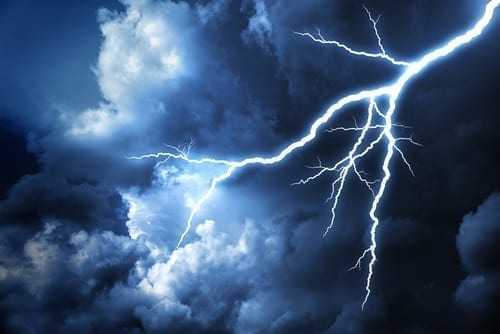
The signature of Benjamin Franklin (1706-1790) – scientist, inventor and political leader during the fight for America’s independence – appears on the Declaration of Independence and the United States Constitution, and his face appears on every $100 dollar bill, a gesture of respect made by the American government, in light of his great contributions to his country.
One of Franklin’s most important and useful inventions was the lightning rod – an iron pole that protects a house from lightning by drawing the bolt away from the property. Franklin developed this invention after discovering lightning to be a discharge of electricity. In 1752, he proved this in the famous, daring experiment in which he flew a kite during a thunder storm. Details of Franklin’s life and discoveries appear in every encyclopedia.
Is it true, however, that no one knew about lightning rods until Franklin discovered it some two hundred years ago?
Perhaps the Sages of the People of Israel, who received the Torah on Mount Sinai, also knew something about this object?
In one chapter of the Tosephta,(1) written some 2,000 years ago, the Sages distinguish between certain supernatural events, which lack all logical explanation, and other, similar events that can be attributed to natural causes. The first are termed derech ha-emori (“the way of the heathens”), and are forbidden by Torah law. Included in this category are witchcraft and other superstitious practices. On the other hand, the second type of actions are permitted.
For instance, the Tosephta explains that it is forbidden to place wood chips on the handles of a pot to make sure that the food doesn’t boil over. This was an accepted heathen practice, which, though possibly efficacious, lacked all natural explanation. However, it is permitted to put slivers of mulberry tree wood into the pot to shorten cooking time. This is not considered as the “way of the heathen,” because the shorter cooking time has a reasonable, natural explanation.(2)
The Tosephta also explains that one should not place an iron rod among chickens to ensure that they develop healthily, because this act has no natural explanation and falls under the category of the “ways of the heathen.” However, it is permissible to place there a metal rod in order to save the chickens from lightning, because there is a natural explanation for the phenomena.
This means that the Torah Sages knew about the use of lightning rods and mentioned them explicitly some 2,000 years ago!
The important question here is not who invented the lightning rod, but whether or not we truly appreciate of the words of the Sages. Had Franklin’s discovery never been publicized, we would have been skeptical about the Sage’s statement that an iron rod can somehow protect livestock against lightning strikes – especially since they state that this follows a natural law. Perhaps we would have considered their statement to lack a basis in reality. Today, we know that we would have been wrong.
In a similar fashion, we should cultivate an appreciation of other Rabbinic statements, even though their validity has yet to be proven.
Notes and Sources
(1) Tosephta, BT Shabbat, chap. 7.
(2) Additional statements there tell us that it is forbidden to add shards of glass to accelerate cooking in the pot, as was practiced at the time. Despite the fact that this was not considered as the “way of the heathens,” and bore a natural explanation, it was forbidden to do so because of the inherent dangers to those eating the dish afterwards.
